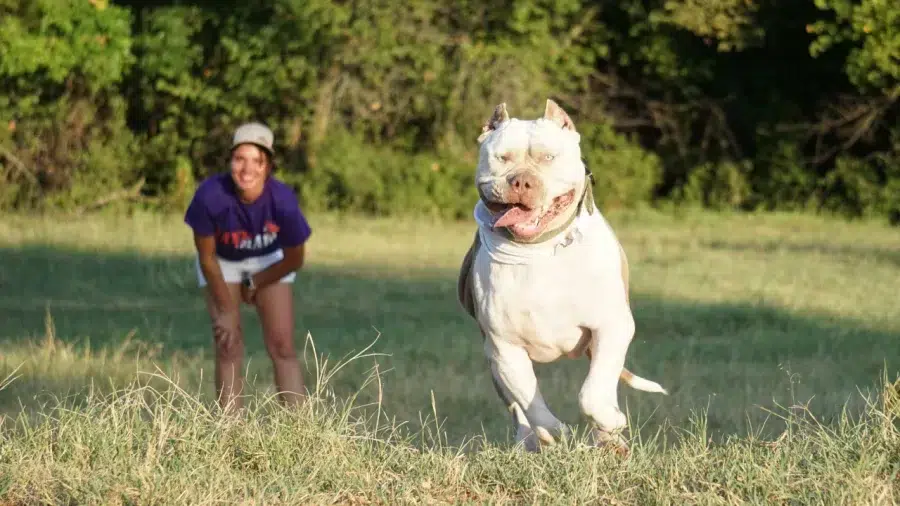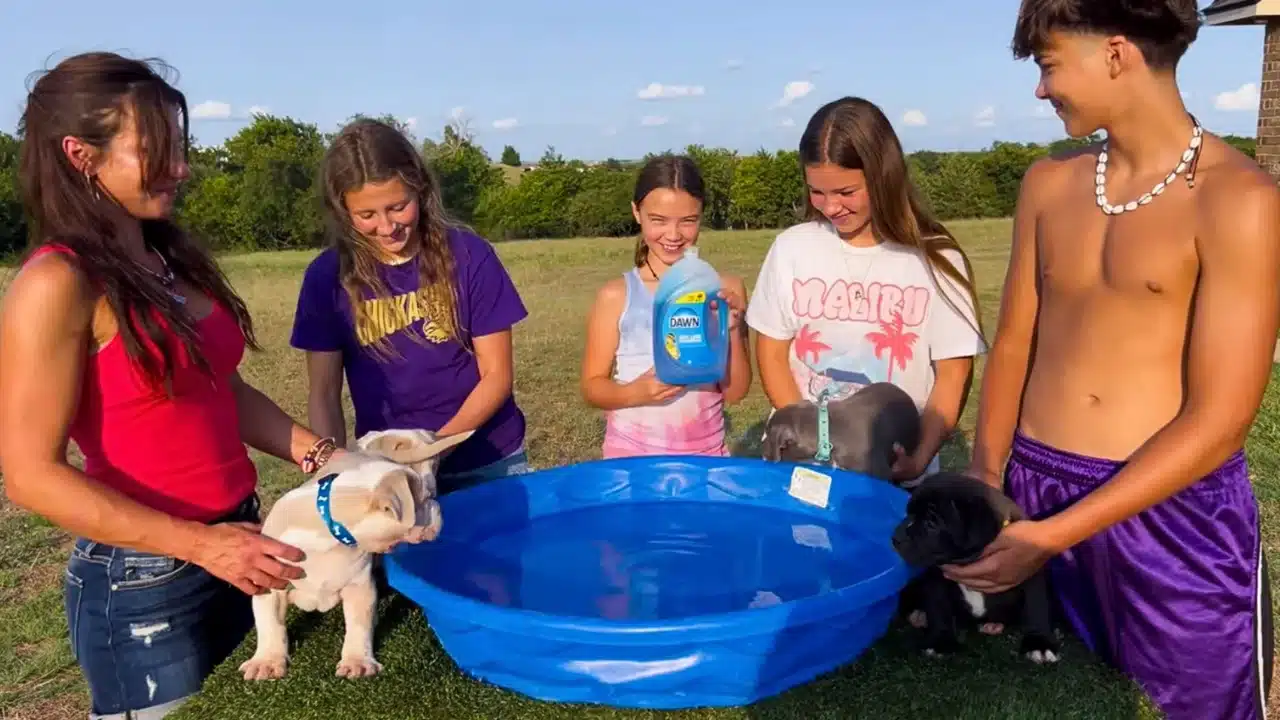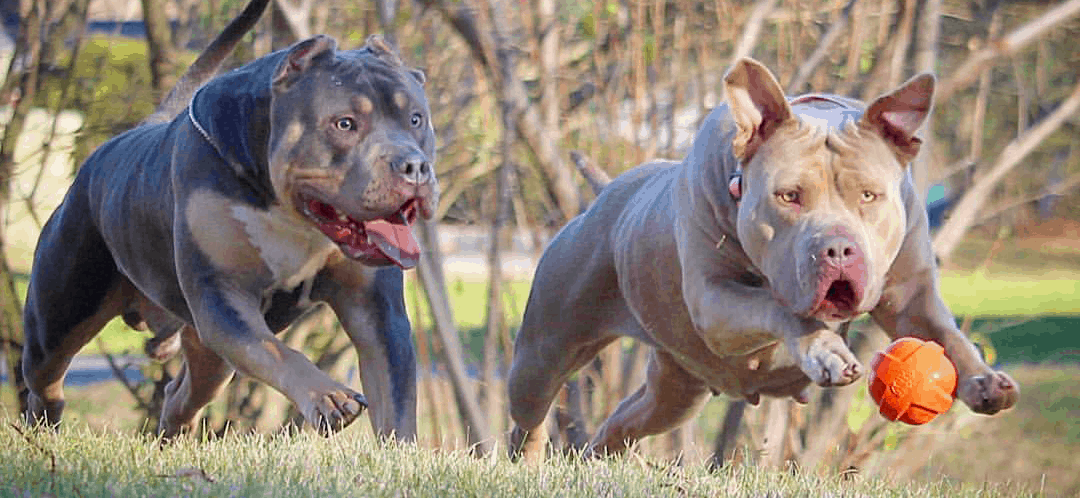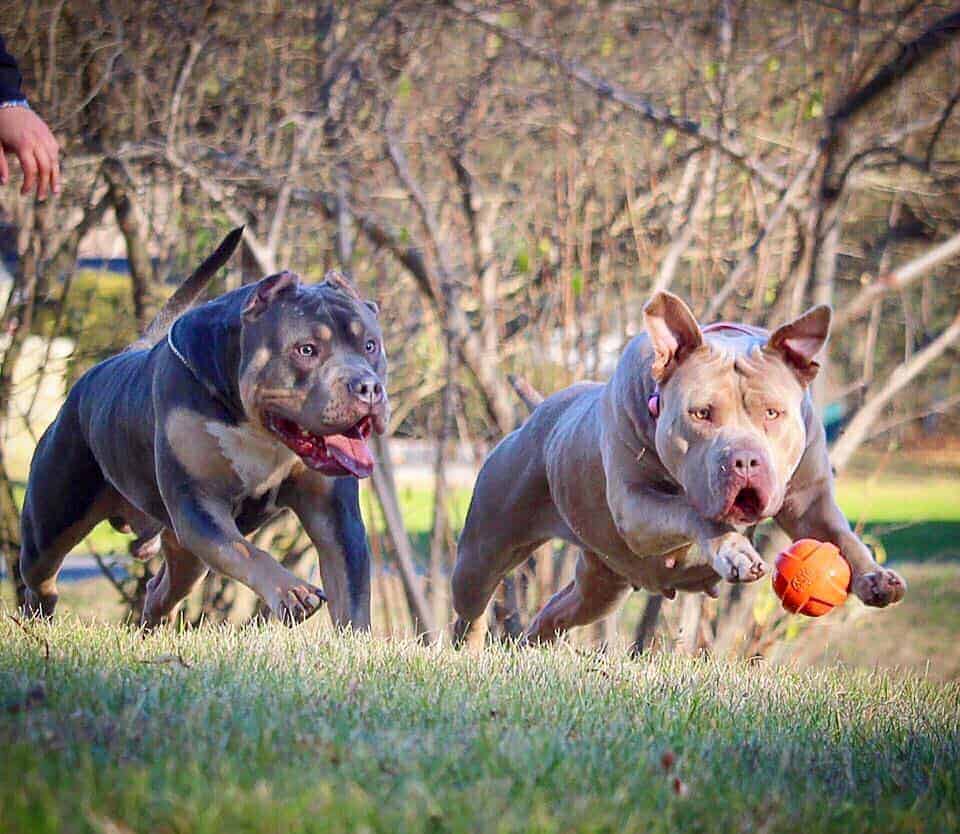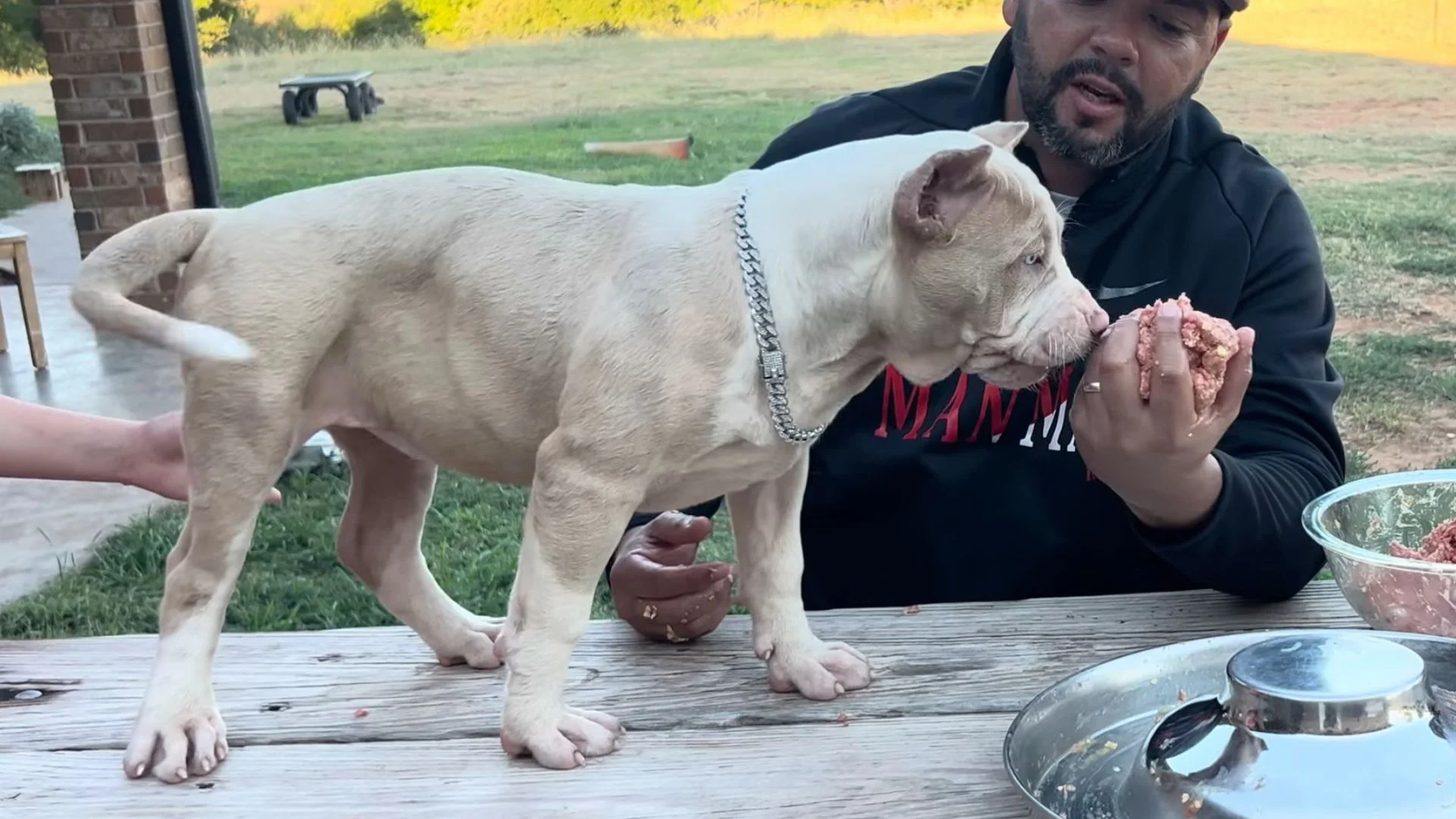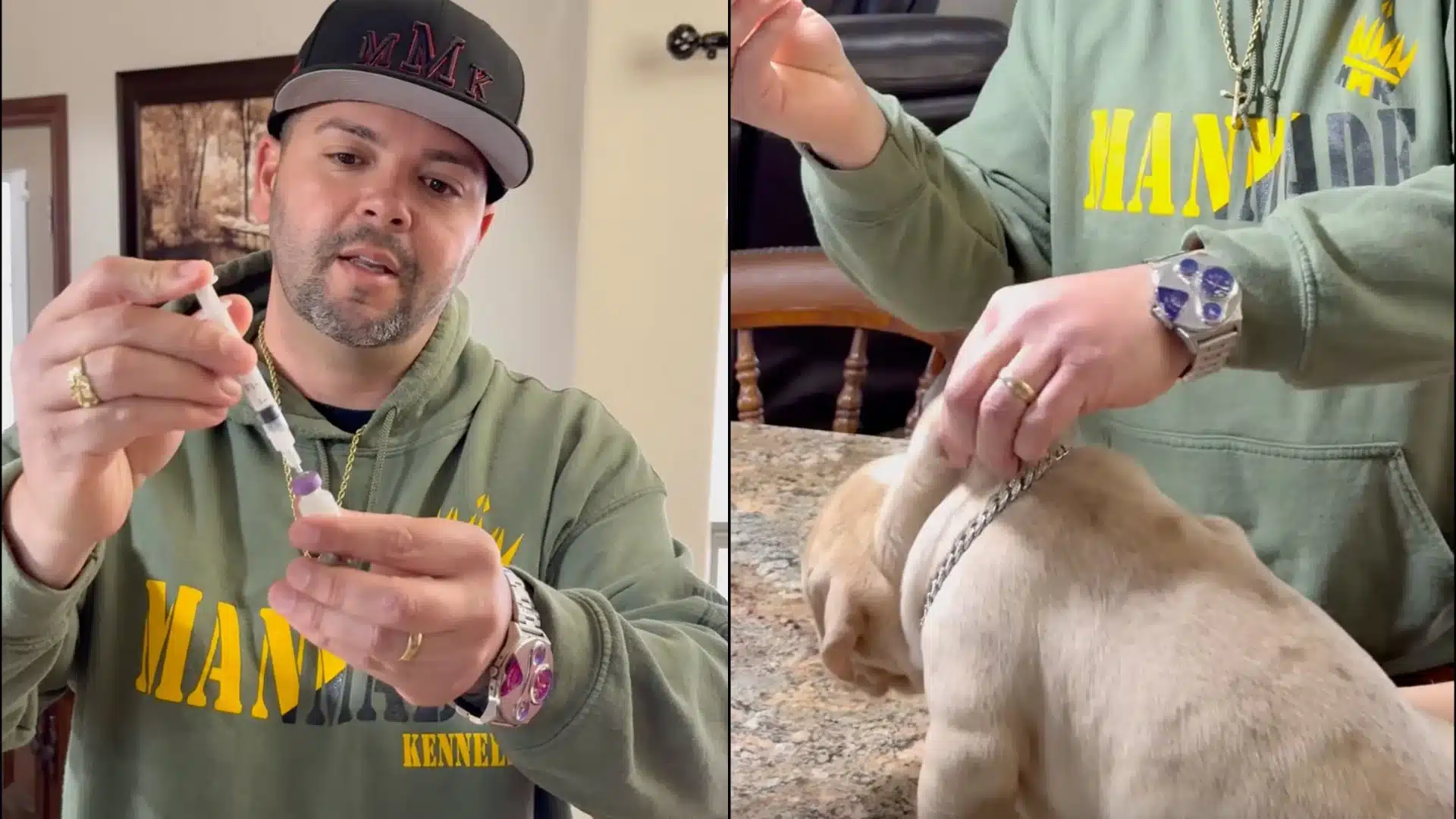When it comes to owning an XL Pitbull, exercise isn’t optional — it’s the foundation for a calm, confident, and healthy companion. These dogs are powerful, muscular, and intelligent, but without proper outlets for their energy, they can quickly become restless or destructive. So how much exercise does your XL Pitbull actually need each day?
For a healthy adult XL Pitbull, a good target is 60 to 90 minutes of daily exercise. This should be divided into 30–45 minutes of physical activity, 20–30 minutes of structured training, and 10–20 minutes of mental enrichment. But this isn’t a one-size-fits-all number — the real key lies in quality over quantity. The goal is to satisfy both body and mind, not just to burn time.
Finding the Right Exercise Balance
The best way to keep your Pitbull balanced is to combine physical activity with mental work. A well-rounded day might start with a brisk morning walk and a short obedience session, followed by a light tug-of-war or playtime in the afternoon, and a relaxing sniff walk or puzzle toy session in the evening. When done right, this kind of structured routine leaves you with a dog that’s not only fit but also calm and attentive.
Many owners make the mistake of thinking more activity automatically equals a better dog. In truth, unstructured or repetitive activity — like aimless walks — can leave your Pitbull physically tired but mentally restless. Purposeful exercise, where your dog must think, listen, and engage with you, will always produce better results.
The Best Types of Exercise for XL Pitbulls
Low-Impact Cardio
Not all exercise needs to be intense. Low-impact cardio helps your Pitbull stay in shape without stressing their joints. Activities like brisk leash walks, controlled jogs on soft surfaces, light hikes, or even treadmill walks (if introduced slowly) are excellent. Avoid constant running on concrete or long-distance sprints; those can lead to sore paws and early joint issues.
Strength and Muscle Building
Once your Pitbull is fully mature — around 18 months or older — you can safely introduce controlled strength exercises. Gentle uphill walks, short drag sessions, or using a light weighted harness can help build muscle and endurance. However, moderation is everything. Heavy pulling or resistance work should never begin before the dog’s growth plates have closed, or you risk lifelong orthopedic problems.
Also see our Top 5 XL Pitbull Workouts for strength and muscle building.
Mental Stimulation: The Overlooked Half of Exercise.
A tired body doesn’t always mean a tired mind. Mental stimulation is what separates a calm, obedient XL Pitbull from one that’s restless and reactive. Ten minutes of focused obedience drills can wear your dog out more than forty minutes of random play.
Rotate between activities like scent games, puzzle feeders, and trick training. Even something as simple as hiding treats around the house or teaching your dog to “find it” taps into their natural instincts and channels energy into productive learning. These exercises sharpen focus, reduce anxiety, and strengthen your bond.
Controlled Socialization and Play
Exercise isn’t just physical exertion — it’s also how your Pitbull learns manners and control around others. Avoid chaotic dog parks where energy can spiral into fights. Instead, organize controlled play with stable, well-behaved dogs or do parallel walks, where dogs walk side by side without direct contact. Fetch, tug, and structured playtime are all great, as long as there are clear rules and calm transitions before and after.
XL Pitbull Exercise Needs by Life Stage
Puppies (8 Weeks – 6 Months)
At this age, your focus should be on developing confidence and coordination, not endurance. Short, gentle play sessions lasting five to ten minutes a few times a day are plenty. Let your puppy explore soft grass, learn to walk on a leash, and play with toys that stimulate their curiosity. Avoid long runs, stairs, or any jumping that could stress developing joints.
Adolescents (6–18 Months)
This stage often feels like raising a wild teenager. Your young XL Pitbull will have bursts of energy and limited self-control. Keep activities short, structured, and varied — about 30–60 minutes daily split between walks, obedience sessions, and brief flirt pole play. Crate time or quiet rest periods are equally important to teach self-control and recovery.
Adults (1.5–6 Years)
This is your Pitbull’s prime. Here, consistency is key. Aim for 60–90 minutes daily with a mix of brisk walks, short training sessions, and focused play. Adults thrive on predictable routines that balance strength, stamina, and discipline. Incorporating recall work, leash manners, and impulse control keeps their minds as sharp as their bodies.
Seniors (7+ Years)
Even older Pitbulls benefit from daily exercise, though intensity should taper down. Replace long hikes with slower walks, sniffing sessions, and gentle puzzle games. These keep muscles engaged and prevent stiffness, while mental games maintain alertness. Always watch for signs of fatigue, such as limping, excessive panting, or reluctance to move, and adjust as needed.
Exercising Indoors
If you live in an apartment or have limited space, don’t worry — your XL Pitbull can still get plenty of stimulation indoors. A quick game of hide-and-seek, short obedience drills, or even a “find the toy” scent game in the hallway can make a huge difference. Tug-of-war (with an “out” command) builds impulse control and satisfies their natural urge to pull. Teaching your dog to hold a “place” position on a mat or bed is another powerful tool for mental focus and calmness.
How to Know If Your Pitbull Is Getting Enough Exercise
A well-balanced Pitbull is easy to spot. After activity, they settle naturally instead of pacing or whining. They maintain a lean, muscular build, respond to commands with focus, and don’t resort to destructive chewing. Calmness after exercise is your best indicator that you’re doing it right.
Warning Signs of Over-Exercising
Even the toughest dogs have limits. If your Pitbull starts limping, hesitates to jump, or shows stiffness after walks, those are red flags. Other signs like excessive panting, sore paws, or lying down mid-walk signal that you need to reduce intensity and give them rest. Always listen to your dog’s body — overdoing it can lead to injuries that take weeks to heal.
Exercise and Behavior Go Hand in Hand
Many so-called “stubborn” or “aggressive” XL Pitbulls are simply bored and under-exercised. A proper exercise routine sets the stage for successful training. The best sequence to follow is simple: exercise first, train second, and offer affection last. This helps burn off excess energy before you ask for focus, ensuring your Pitbull learns in a calm, receptive state.
A Sample 7-Day Routine
- Monday: Brisk morning walk, light tug in the afternoon, obedience practice at night
- Tuesday: Uphill walk, puzzle feeder, short recall training
- Wednesday: Jog and scent game combo
- Thursday: Gentle treadmill walk, trick training
- Friday: Longer hike, then rest and calm play
- Saturday: Fetch or flirt pole session, followed by relaxation drills
- Sunday: Rest day with enrichment toy or chew
The key isn’t intensity — it’s consistency. Regular, mindful activity keeps your XL Pitbull physically satisfied and mentally balanced.
Common Mistakes to Avoid
Avoid relying on walks alone. Dogs need to think as much as they move. Don’t let puppies jump or sprint on hard surfaces, and skip chaotic play environments that reinforce bad habits. Most importantly, don’t ignore fatigue or soreness — recovery is part of good training. Remember, your goal isn’t to exhaust your dog, but to shape calm, confident energy.
When to Adjust the Routine
Every Pitbull is different. If you notice sudden laziness, weight gain, or unusual behavior, something’s off. These can be signs of too much exercise, not enough, or even an underlying medical issue. When in doubt, adjust intensity or consult your vet. The goal is sustainable health, not constant performance.
The Bottom Line: Strong Body, Calm Mind, Happy Dog
Your XL Pitbull is built for strength and stamina, but they thrive most when structure meets affection. Meeting their exercise needs doesn’t just produce a tired dog — it creates a stable, well-rounded companion who’s confident, obedient, and deeply bonded to you. Stay consistent, respect their limits, and keep both their muscles and minds active. Do that, and your Pitbull will reward you with years of loyalty, calmness, and vitality.
Related Posts
I am a highly skilled content writer and SEO expert with a passion for helping small businesses succeed in the digital world. With my extensive knowledge of the latest SEO techniques and strategies, I have successfully assisted numerous clients in improving their website rankings, generating more leads, and driving a significant increase in website traffic.
As a professional content writer and SEO expert, I am confident in my ability to contribute significantly to the success of small businesses. If you are seeking a results-driven, highly skilled digital marketer who can help you increase your ranking, convert new leads, and see a substantial improvement in website traffic, I would welcome the opportunity to collaborate with you.
Website: https://manmadewebsites.com/
Email: hello@digitalmarketingchap.com

